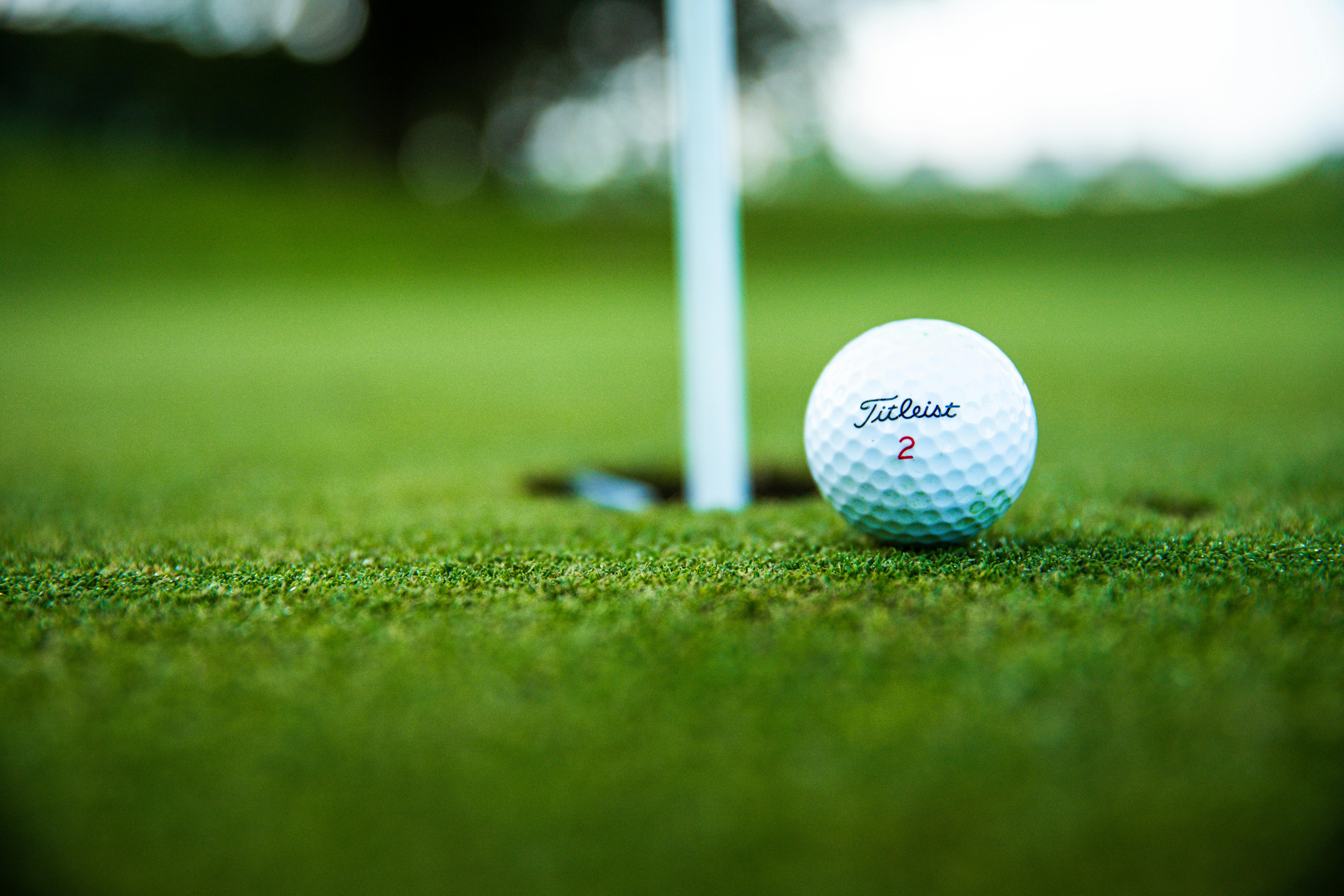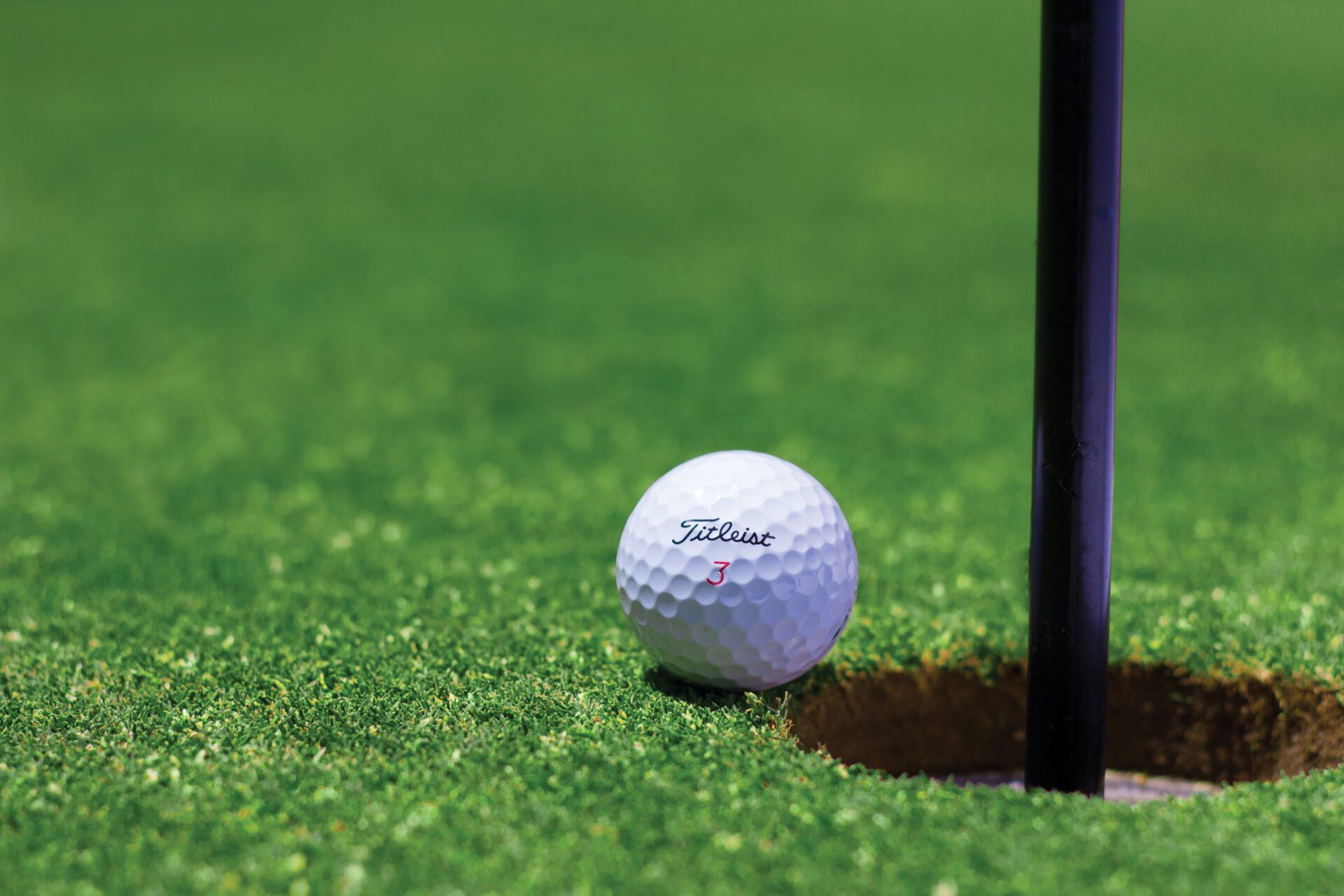Golf is a popular sport that involves skillful accuracy and precision. The golf ball is an integral part of the game, and its construction requires precision engineering. The golf ball is made from a variety of components, including rubber, resin, and dimples. The process of making a golf ball involves several steps including molding, coating, and cutting. Each step must be carefully monitored to ensure that the quality of the finished product meets rigorous standards. This article will explore in detail the process by which a golf ball is made.Golf balls are made up of various materials and parts. The core of the golf ball is typically made from a rubber compound that gives the ball its bounce and spin. The cover of the golf ball is typically made from a urethane material that provides control and durability. The layers surrounding the core and covering also provide stability and distance when hit. The different layers of the golf ball are constructed by combining different materials in a pressurized machine. The golf balls are then stamped with a logo or number, dried, painted, and tested for quality control before being packaged and sent to stores.
Raw Materials Used to Make Golf Balls
Golf balls are made from a variety of raw materials, including rubber, polybutadiene, and various types of plastics. The core of the ball is usually made from a type of rubber known as polybutadiene which is formed into a sphere and then covered with several layers of durable plastic such as Surlyn or urethane. The main purpose of the core is to provide the ball with its compression and to ensure that it returns to its original shape after being struck by a golf club.
The cover layer is typically made using Surlyn or urethane and its function is to provide the ball with its durability and spin characteristics. Surlyn has a harder feel than urethane and provides more control while urethane typically has more spin and feel than Surlyn. Some golf balls also include an inner mantle layer which adds additional spin and distance.
Lastly, some golf balls may also have an outer coating layer which helps to add dimples for better aerodynamics or coloring for visual appeal. All these components come together to create the perfect golf ball for any player’s game!
Molding the Core of the Golf Ball
The core of a golf ball is a critical component in providing the ball with its performance characteristics and feel. It is responsible for providing the ball with its durability, resilience, spin and flight path. The core is usually constructed from rubber or synthetic materials and is subject to a process known as molding to create it. This process involves heating and compressing the material in a mold to form it into its desired shape and size. The mold can be made from any material that can withstand heat and pressure, such as metal or plastic. Once the core has been formed, it is then ready to be used in the finished golf ball.
Molding the core of a golf ball requires precision and accuracy to ensure that every ball meets certain performance standards. The mold must fit together perfectly without any gaps or voids, which could cause inconsistencies in the performance of the ball. The temperature also needs to be kept consistent throughout the process so that all balls are of equal quality. If these factors are not taken into account during molding, then there may be issues with how well each individual golf ball performs when used on the course.
Once molded, the core must also be tested for resilience, spin rate and flight path accuracy before being approved for use in golf balls. This testing ensures that each golf ball meets certain standards set by governing bodies such as the USGA (United States Golf Association) and R&A (Royal & Ancient). This ensures that only high-quality balls are used on professional courses around the world. After passing these tests, each golf ball can now go through production so that it can eventually be used by players on courses everywhere!
Adding the Inner Layer of the Golf Ball
The inner layer of a golf ball is an essential component for achieving optimal performance. The inner layer is made up of a solid core and a rubber-like cover. The core is usually made from either rubber or plastic, and it helps to provide the ball with its weight and spin. The cover is designed to provide the ball with additional durability, so that it can withstand extreme temperatures, wear and tear, and other external forces. In order to ensure that the ball performs optimally, it is important to choose the right materials for both the core and the cover.
The core of a golf ball needs to be both light and durable so that it can deliver maximum distance while also providing good spin control. Rubber cores are commonly used in golf balls because they are lightweight yet durable enough to handle high impact shots. Plastic cores are also used in some golf balls as they are more durable than rubber and can provide additional distance off of the tee.
The cover of a golf ball needs to be able to withstand impacts from clubs as well as extreme weather conditions such as rain or heat. The cover must also have enough traction in order to provide spin on shots when needed. Covers are usually made from either urethane or balata with urethane being more durable than balata but less desirable for spin control.
When choosing materials for a golf ball’s inner layer, it is important to consider both performance and durability so that you can achieve optimal results out on the course. By carefully selecting both the core and cover materials, you can ensure that your golf ball will perform just as you expect it too no matter what conditions you may encounter out on the course.
Cover Material Selection and Application
Cover materials are an important part of any product or system, providing protection from the environment and ensuring the longevity of the product or system. Selecting the right material for a particular application is critical to ensure that it will perform as expected. This article will provide an overview of the different types of cover materials available and discuss how to select and apply them for optimal performance.
The most common types of cover material are rubber, plastics, metals, fabrics, and composites. Each type has its own advantages and disadvantages, so it is important to understand the specific properties of each before making a decision. Rubber is often used for its strength, flexibility, and durability, while plastics provide excellent water resistance and are often used in outdoor applications. Metals are strong but can be difficult to work with because of their weight. Fabrics offer breathability but lack durability in certain environments. Finally, composites combine different materials for unique properties that may be advantageous in certain applications.
When selecting a cover material for a particular application, it is important to consider factors such as cost, environmental conditions, durability requirements, weight requirements, color requirements, fire safety considerations, flexibility needs, and whether or not it must be recyclable or biodegradable. Once the material has been chosen based on these criteria, it must then be properly applied in order to maximize its performance. This includes ensuring that the material is properly sealed around edges to prevent leaks or seepage; using appropriate fasteners such as screws or rivets; using chemical treatments if necessary; and verifying that all seams are sealed properly before use.
In summary, selecting and applying cover materials correctly can have a significant impact on the performance of any product or system. By understanding the different types of materials available and understanding how they should be applied in order to maximize their effectiveness can make sure that your products will perform as expected in any environment they may encounter.

The Process of Painting a Golf Ball
Painting a golf ball can be a fun and creative way to customize your equipment. It’s also relatively easy and requires only a few items. To get started, you’ll need some acrylic paint, a paintbrush, a pencil, and some masking tape. First, you’ll want to use the pencil to draw the design you want on the ball. Once you have your design sketched out, use the masking tape to tape off any areas that you don’t want painted. This will help keep your painting neat and tidy. Then, using the paintbrush and acrylic paint, carefully paint in your design. Allow the paint to dry completely before removing the masking tape. Your golf ball is now ready to use!
Painting a golf ball is an enjoyable activity that can also add some personality to your equipment. With just a few supplies and some patience, you can create a one-of-a-kind golf ball that will stand out on the course!
Quality Control During Manufacturing Process
Quality control is an important part of the manufacturing process. It helps to ensure that products meet all predetermined standards before they are released for distribution or sale. Quality control is a process that involves inspecting and testing products to ensure they are safe, reliable, and meet desired performance standards. Quality control teams use a variety of techniques to identify defects and other issues in order to improve product quality.
The quality control process begins with identifying the materials and components that are needed for a particular product. The components must be inspected for conformity to specifications before they can be used in the manufacturing process. Once components have been approved, they are combined into sub-assemblies or complete assemblies. At this stage, quality control inspectors will look for defects in construction or installation errors which could affect product performance or safety.
During the manufacturing process, quality control inspectors will monitor the production line to ensure that all steps are followed correctly and that no defects occur during assembly or fabrication. Inspectors may also use visual inspections, testing equipment, and other methods to verify product quality. Any discrepancies found by inspectors must be reported immediately so corrective action can be taken as needed.
Once a product has been fully assembled it undergoes a final inspection. This inspection is designed to make sure the finished product meets all requirements in terms of functionality, safety, performance, and reliability. If any discrepancies are found during this stage of inspection, they must also be reported so corrective action can be taken before releasing the product for shipping or sale.
By implementing an effective quality control process during manufacturing, companies can help prevent defective products from reaching consumers which can save money and improve customer satisfaction in the long run. Quality control is an essential part of any successful manufacturing operation and should not be overlooked when creating a production plan.
Final Assembly of a Golf Ball
The final assembly of a golf ball involves several steps. The first step is to assemble the core, which consists of a rubber or plastic center surrounded by layers of winding material. This is typically done with an automated machine that winds layers of material onto the core. Once the core is complete, it is then ready to be covered in a durable outer layer. This layer can be made from a variety of materials, including synthetic rubber, urethane, and polyurethane. It must be thin enough to meet USGA standards for playability, yet durable enough to stand up to impacts from golf clubs. After the outer layer has been applied, the ball will then be molded into its final shape through either an injection molding or compression molding process. After the ball has been molded it can then be painted with its trademark design and logo and sent for quality testing before being packaged for sale.
The quality control process for a golf ball is extremely important and involves testing for roundness, hardness, weight, dimple pattern accuracy and other factors that may impact performance on the course. Once these tests have been performed and the ball has passed inspection it can then be packaged in boxes or sleeves ready for sale.

Conclusion
The process of making golf balls is both intricate and precise. It is a delicate balance of science, engineering, and artistry. From the basic components to the advanced engineering that goes into creating a golf ball, manufacturers are constantly striving to make the best product for their customers. In order to achieve this, they must understand the properties of each component and how it affects performance and playability. The end result is a product that offers optimal performance, improved distance, and greater control for players on the course.
Golf ball technology has come a long way over the years. From advancements in materials to new manufacturing techniques, manufacturers have been able to create higher-performing balls with better feel and control than ever before. By understanding the process of how golf balls are made, we can appreciate the dedicated work that goes into creating these products and enjoy the benefits they provide for us on the course.




